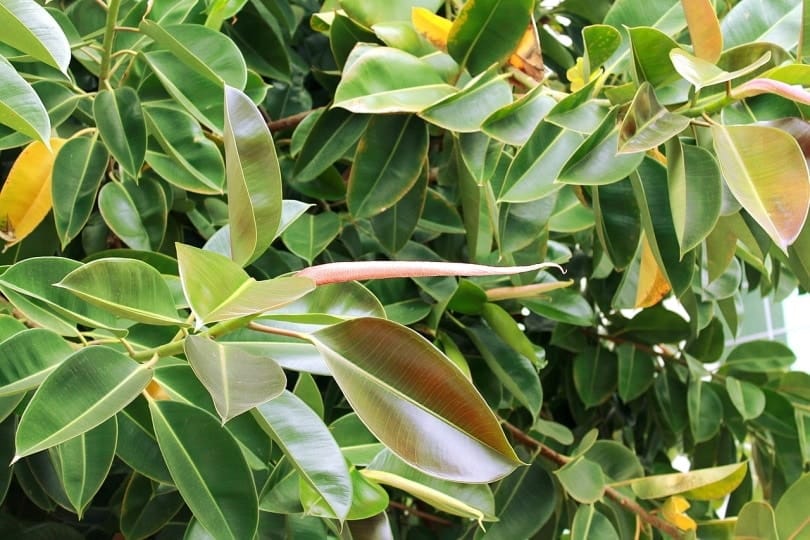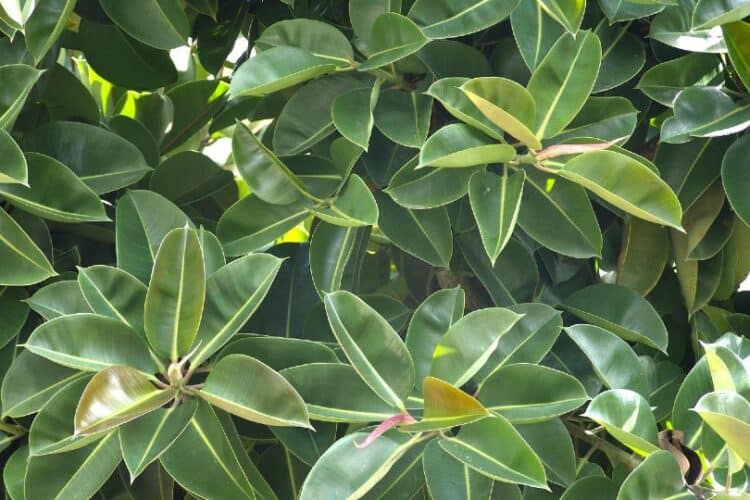People love rubber plants for their low-maintenance needs and thick, soft leaves that can add some love and green to the concrete jungles we live in. American rubber plants, scientifically known as the Peperomia obtusifolia, are considered non-toxic for cats.
However, there is another classification of “rubber plants” known as Ficus elastica, which is considered toxic for cats. So, ensure that you check to make sure that the plant you’re purchasing is a plant that is safe for your cats.
Here’s a brief guide on the different kinds of rubber plants and their toxicity information for cats.
Peperomina obtusifolia (American Rubber Plant)
This plant is non-toxic for cats, dogs, and horses. Cats may experience mild gastrointestinal upset if they eat the plant as they cannot digest it, but this plant doesn’t contain any known toxins for cats.
Ficus benjamina (Weeping Fig)
The Fiucs benjamina is toxic for cats, dogs, and horses. It contains toxins such as ficin and ficusin, which can cause gastrointestinal upset and skin irritation if the animal comes in contact with the plant or its sap.
Ficus elastica (Rubber Tree Plant)
All sub-breeds of the Ficus elastica plant, including—but not limited to—the Decora, Robusta, Burgundy, Black Prince, Abidjan, Doscheri, Sophia, Ruby, and Tineke sub-breeds. The Ficus elastica plant produces a milky sap that can cause vomiting, diarrhea, and loss of appetite in cats.

Crassula argentea (Jade Plant)
Jade plants aren’t just toxic for cats, dogs, and horses; they’re toxic for people, too. When the jade plant’s sap comes in contact with human skin, it can cause severe irritation and don’t even get us started on the effects it has on your eyes. For your cat’s sake and yours, steer clear of this plant.
Rhyncophorum (Baby Rubber Plant)
Rhyncophorum, also known as the baby rubber plant, is one of the rubber plants that is non-toxic for cats. Still, you shouldn’t let your cat eat the plant as it can cause gastrointestinal upset since your cat can’t digest it or its sap.
How to Keep Your Cat Safe
Toxic plants should be kept well out of reach of your cat. Hanging planters are a great way to keep your cats away from your plants, but you must hang them high enough since cats have a fairly good jumping range.
Realistically, you’re better off not propagating toxic plants inside your home if your cat is the curious type. Many of these plants can be propagated outdoors, where they’re safe from indoor cats. Outdoor and stray cats will leave the plants alone naturally, but curious indoor cats might try to eat them.
Conclusion
Cats get into all sorts of mischief when left alone. So, it’s up to us to help them stay safe by avoiding putting them at risk. We can beautify our homes and our lives with plants even if we don’t use the ones that are toxic for cats. Luckily, American Rubber Plants are non-toxic to cats, even if most of the other “Rubber Plants” are toxic.
Featured Image Credit: Pixabay














